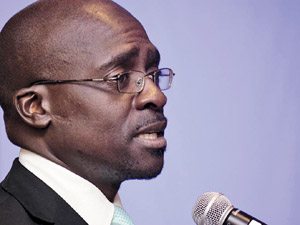
[miningmx.com] – MALUSI Gigaba, minister of public enterprises and Eskom’s shareholder, dismissed suggestions that heads would roll after the R10bn, six month overrun at the R105bn Medupi power station.
However, there will be at least one significant departure at Eskom: the company’s respected CFO, Paul O’Flaherty, is to leave the organisation even though Malusi said every effort should be made to retain his services.
“We will make no rash decisions that may cause further harm,’ said Gigaba regarding meteing out blame for the scheduling delays at Medupi that Eskom said could result in a 700MW supply deficit.
But the department had appointed a consultant group to investigate the problems at Medupi which Eskom has blamed on poor supervision by contractors of their labour, as well as technical shortfalls, and general labour protests.
This news comes against a set of annual results published by Eskom today which show the utility still has the ability to make record profits announcing today a bottom line of R5.1bn but lower than the R12.6bn surplus reported in the 2012 period.
Revenue has jumped skyhigh with 12.2% from R114bn in 2011/12 to R128bn in 2012/13. This was primarily thanks to higher electricity tariffs given that electricity sales was down for the year by 3.7% from 224,785 GWh to 216,561 GWh for 2012/13.
It’s at the primary energy side that Eskom seems to be most concerned.
“The cost of coal burnt increased by 24.2%, driven mainly by higher costs and lower output from the cost-plus mines feeding Eskom power stations,’ said Brian Dames, Eskom CEO.
In the financial year to 31 March 2011 primary energy costs amounted to R35.7bn. This increased by 29% in the financial year 2012 to an amount of R46bn. The latest total cost of primary energy has now increased by a further 36% to R60.7bn.
In cents per kilowatthour this amounts to the following:
In 2011 primary energy cost per kWh was 15.9c. This increased to 20,6c/kWh in 2012 and is now standing at 28.1c/kWh. Primary energy of course includes coal, gas, diesel and an environmental levy that Eskom has to pay to government as a tax.
A total of 53% of this increase of 36% is due to coal.
Also alarming is the increase in cost to run open cycle gas turbines (OCGT). This has increased by R3.5bn, an increase of 235% from the 2012 book year. This is however an alarming warning of just how tight Eskom’s supply system is.
The OCGT’s are run as a last resort. Cleary Eskom has been having to run these much harder and longer than in any previous year.
Dames said Eskom has made significant progress on its new build programme during the year under review, despite the challenges experienced.
He was referring to the recent announcement that Medupi power station has been delayed by at least 6 months.
“A record R60bn was invested in infrastructure during the year and since the new build programme began in 2005, Eskom has delivered 6,017MW of new generating capacity as well as 4 686 km of new transmission lines and 23,775 MVA of new substations,’ said Dames.
Eskom said the year under review also saw progress towards the introduction of renewable energy on to the grid, as well as on its commitment to increase the participation of independent power producers in the market.
Eskom started construction on its own wind farm, the R2.4bn Sere project, as well as signing power purchase agreements for more than 2,400MW of renewable energy with new independent power producers (IPPs) procured by the Department of Energy.
As at end-March 2013, Eskom had contracted total capacity of 1,135MW from a range of IPPs (2012: 1,008 MW). The total paid to IPPs and municipal generators during the year under review was R2.9bn or 83.6 c/kWh (2012: R3.3bn or 77 c/kWh).









